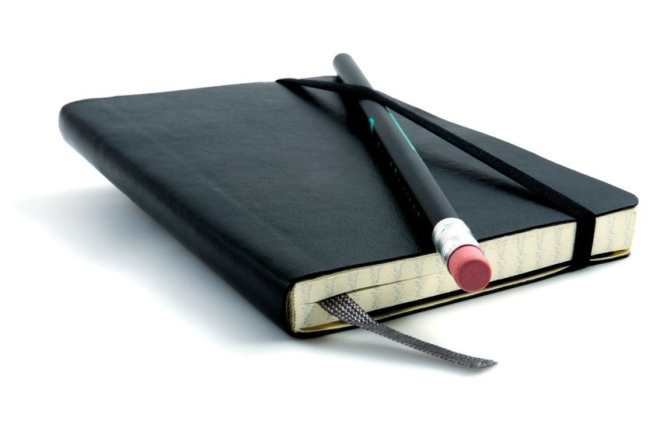Improving Your Moleskine Notebook Productivity
I’ve seen these snazzy notebooks before but until this post I didn’t know they were called Moleskine Notebooks. Writer Cormac Reynolds provides us with five ways of improving your Moleskine notebook productivity.
As the years have gone by, Moleskine Notebooks have become the trademark staple for any person dabbling in various creative endeavors, especially artists and writers. The Moleskine in fact is just about as iconic as the iPhone, Ray-Ban sunglasses or Starbucks coffee.
But simply owning a Moleskine is not nearly enough to spark productivity and build the momentum towards optimal efficiency. Here are some smart ways to transform your own Moleskine from just a standard notebook into something you can’t live without and you need a notebook subscription service to keep up with the number of notebooks you go through.
-
Maintain Productivity With The Circle To-Do Lists
The more basic of the to-do lists is in most cases just lists of those shoddy tasks descriptions you cross out once completed. While this type of simplicity is sufficient for the simpler tasks associated with either “not done” or “done” you may need more sophisticated systems for those tasks between “not done” and “done.”
This is where the Circle Method comes in. This method begins with each of the listed items with empty circles next each one.
It will gradually fill up these circles with different marks dependent on completion levels of the tasks.
| Item | Description | Type Circle |
| New | For new items in your list. | Empty |
| Next | To identify the next task you want to work on next. | Circle with a dot in the middle. |
| Started | To mark tasks you’ve already started. | Circle crossed with diagonal slashes. |
| Cancelled | To mark the items you trash. |
Cross circle with opposite slashes. |
| Halfway Completed | A task completed halfway. | A half-filled in circle. |
| Completed | A finished task. |
A filled-in circle. |
These methods are versatile allowing you to easily change task statuses as needed.
-
Organization Using the Quadrant Technique
When your notes require a fair amount of internal based referencing, the Quadrant Technique can be a real lifesaver. One downside is it requires a bit of time investment to set-up your notebook.
You can set it up by dividing each page into half, draw a line through the middle and then draw a line separating the bottom from the top. This creates four quadrants.
Your top-left quadrant will be named A, the bottom-left quadrant will be B, the top-right quadrant will be C and then the bottom-right quadrant will be D.
These groups of your four quadrants will be called blocks. You should now number each of these blocks, beginning with 1. This is all that is needed for the setup. For example, if you write notes in the quadrant numbered 38C and you have to reference a fact or note in block 10, quadrant A, all you need to do is use parenthesis: (10A).
-
Creating Indexes In The Back
You should set aside about 10 pages at the back of the Moleskine notebook and then use these to create your own indexing system for indexing. This is very useful when you happen to have different notes on numerous topics and then you plan to reference these at a later stage on a frequent basis.
To use indexes, you should number each page from the beginning to the end. When using the Quadrant Technique you can use this as a reference instead.
The process of indexing is pretty basic. For example, when you have one page that involves notes of comparisons on various laptops, go back into your index where you can write using a new line, “Laptop Comparison, page 22.”
When you want to reference this comparison, you’re able to easily find it. Now you can save yourself from having to flip through the notebook.
You now only need to go through the 10 pages of your index. Indexing systems can grow a lot more useful when your notebook begins to grow with a lot more information.
-
Divide Your Notebook With Plastic Tabs
You can increase your organization in your notebook by the use of divider tabs, particularly when you plan to use the Moleskine for a variety of tasks or purposes.
If you use the indexing system and quadrant technique, you may feel like you will just fill out the notebook from day to day. While there’s absolutely nothing wrong or bad about this technique it isn’t optimal.
It’s far easier to divide your notebook into portions and then assign each portion with a topic. Plastic tabs are a fantastic way in which to visualize different sections.
When you are able to combine this technique with the other types of organization methods, you will find the Moleskine has become a very important portion of your daily activities and life.
-
Choosing The Right Pen
You can also enhance the use of your notebook to a new level by just changing your pen. You may ask what pen is best but the choice is really yours.
However, here are some guidelines on the pens that work best with a notebook. Choose the type of pen that won’t bleed.
Pens that bleed through the pages could be disastrous. If you’re lucky you will end up with clean pages you can’t use.
At the worst, you will end up with past work that is completely illegible. In most cases, the notebook will result in a mess of various ink spots.
Pick the type of pen that won’t smear. This is similar to bleeding issues, wet pens which smear easily can end up in the notes you’re unable to read.
Even when you’re careful with your writing, the ink can smear the instant you close the book. Avoid these pen types, unless you have the time and patience to allow the ink enough time to dry each time you use the notebook.
Choose the type of pen you feel comfortable writing with. It’s interesting that holding the correct pen can help you feel motivated into writing more.
The comfort of a pen is personal, so you may need to try out a few to find the one you feel the most comfortable with.
If you’re looking for a recommendation, the Pilot G2 pen is a great choice. It’s affordable, won’t bleed or smear and it will write smoothly.
Conclusion
If you’re not planning on using your Moleskine notebook often, the above tips will not give you benefits to your existing routine. However, for those who use their Moleskine daily, these techniques can really increase your notebook productivity to the next level.
In the midst of a fast-paced society, the art of journal writing has fallen to the wayside in favor of Facebook status updates and Tweets. But there’s something incredibly powerful about keeping a personal, private recollection of your life.
For stepparents, journaling can be a great way of recording your thoughts and feelings. In this respect, journaling can be considered a therapeutic way of dealing with your challenges within the blended family.
Copyright: sixtyandforty / 123RF Stock Photo







Hi Cormac,
I’m happy to inform you that this post is included in the recent part of TimeCamp’s weekly Productivity Articles roundup!
Thank you for sharing these excellent tips on how to improve productivity by writing everything down in Moleskine.
Please find this recent episode here: https://www.timecamp.com/blog/index.php/2017/06/productivity-articles-18617/.
Ola Rybacka, SM Manager at TimeCamp
Thanks Ola for sharing this. I’ll pass this on to Cormac.
Gerardo